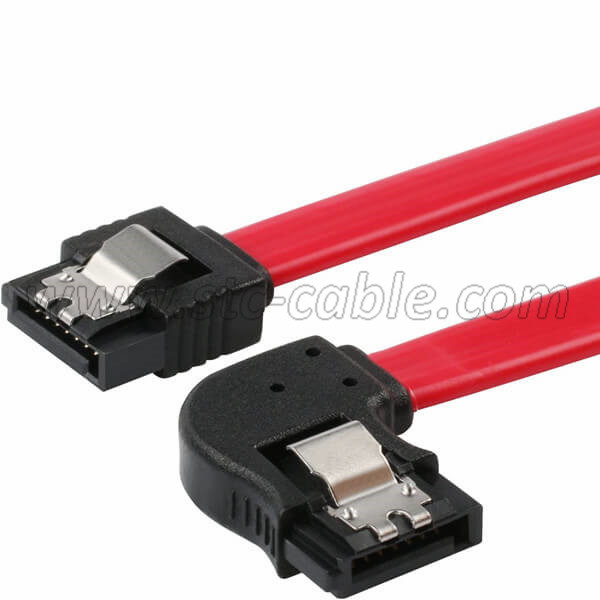What is a SATA cable?
A SATA (Serial Advanced Technology Attachment) cable is a type of computer cable that connects storage devices such as hard drives and optical drives to the motherboard. These cables enable high-speed data transfer within desktop computers and laptops. SATA cables come in different versions, including SATA I, SATA II, and SATA III, each with varying speeds and specifications. Here’s a quick comparison:
1. SATA I: Operates at 1.5Gb/s with a maximum bandwidth throughput of 150MB/s.
2. SATA II: Operates at 3Gb/s with a maximum bandwidth throughput of 300MB/s.
3. SATA III: Operates at 6Gb/s with a bandwidth throughput of 600MB/s. It’s backward compatible with previous generations.
In summary, SATA cables are essential for efficient data transfer between storage drives and your computer’s motherboard.
What are the differences between SATA and NVMe?
Let’s dive into the key differences between SATA and NVMe:
1. Interface Type:
SATA: It uses the AHCI (Advanced Host Controller Interface) protocol and is designed for both hard disk drives (HDDs) and SATA-based SSDs.
NVMe: Specifically designed for SSDs with flash technology, NVMe takes advantage of PCIe sockets for faster communication with the system’s CPU.
2. Speed:
NVMe: Significantly faster than SATA, NVMe drives can achieve speeds up to 7,500MB/s (for PCIe 4.0) or 3,500MB/s (for PCIe 3.0).
SATA: Typically reaches speeds of up to 500MB/s, still much faster than traditional HDDs.
if you’re looking for blazing-fast performance, NVMe is the way to go. However, SATA SSDs are more affordable and suitable for everyday tasks.
How do I choose between SATA and NVMe for my system?
When deciding between SATA and NVMe for your system, consider the following factors:
1. Performance Needs:
NVMe: If you need high-speed performance (e.g., gaming, video editing, large file transfers), go for NVMe. It offers significantly faster read/write speeds.
SATA: For everyday tasks (web browsing, office work), SATA SSDs are sufficient.
2. Budget:
NVMe: Generally more expensive than SATA SSDs.
SATA: More budget-friendly.
3. Compatibility:
NVMe: Requires an M.2 or U.2 slot on your motherboard.
SATA: Compatible with most systems.
4. Storage Capacity:
NVMe: Available in larger capacities (up to several terabytes).
SATA: Also available in various capacities but may be limited compared to NVMe.
5. Future-Proofing:
NVMe: Future systems are likely to support NVMe.
SATA: Still widely used but may eventually phase out.
In summary, choose NVMe for speed and performance, and SATA for affordability and compatibility.
Send your message to us:
Post time: Jul-08-2024
